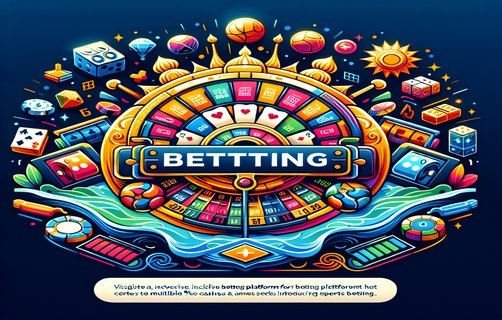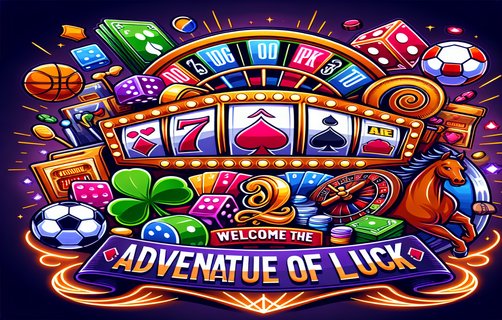Navigating the Game Design Labyrinth: Strategies for Balance and Innovation
खेल डिजाइन भूलभुलैया को पार करना: संतुलन और नवाचार के लिए रणनीतियाँ
In the evolving landscape of game design, many creators grapple with the delicate nuances of pacing, objective adjustments, rules adherence, time tracking, and resource management. These elements intertwine to dictate the player experience, crafting a tapestry of engagement that can either enthrall or frustrate.
Pacing serves as the pulse of gameplay—too fast, and players can become overwhelmed; too slow, and boredom sets in. Effective pacing requires designers to consider not only the flow of challenges but also the anticipation of rewards. Regular intervals of adrenaline-inducing action should be balanced with moments of strategizing and reflection.
Adjusting objectives and rules becomes imperative as player feedback emerges. Designers must be agile, open to revisiting their initial game architecture to enhance user experience. Gamification theories suggest that players thrive when they feel a sense of progression. Incremental changes in objectives keep engagement high, allowing players to explore and adapt, which enhances the overall gameplay.

Time tracking mechanisms should work seamlessly to uphold the rhythm of play. A thoughtful integration of timers can encourage swift decision-making, while also providing a safety net for players to calibrate their moves in intense scenarios. This balance ensures that gameplay remains dynamic while affording players the necessary breathing room.

Resource counters play a vital role, acting as the lifeblood of many games. They need to be precise and intuitive, providing players with a clear understanding of their inventory and capabilities. Mismanagement of these resources can lead to frustration, while well-implemented counters create a sense of achievement and strategy.
Outcome-based luck introduces an element of unpredictability that can enrich gameplay. It is essential, however, to calibrate this to ensure it does not overshadow skill. Asymmetrical board designs enhance this further, allowing different player strategies to coexist harmoniously within the same game environment. Players can experience unique interactions and opportunities, increasing replayability.
Ultimately, striking the right balance in game design necessitates a thoughtful contemplation of every component. As designers innovate, they pave the way for unique experiences. By understanding pacing, objectives, time management, and resource control, they can create not just games, but vibrant worlds of exploration and challenge.
खेल डिजाइन के बदलते परिदृश्य में, कई निर्माता गति, उद्देश्य समायोजन, नियम पालन, समय ट्रैकिंग और संसाधन प्रबंधन के नाजुक बारीकियों से जूझते हैं। ये तत्व खिलाड़ी के अनुभव को निर्धारित करने के लिए आपस में intertwined होते हैं, जो सगाई के एक पट्टी का निर्माण करते हैं जो या तो मंत्रमुग्ध कर सकता है या निराश कर सकता है।
गति गेमप्ले की धड़कन के रूप में कार्य करती है - बहुत तेज, और खिलाड़ी अभिभूत हो सकते हैं; बहुत धीमी, और बोरियत सेट होता है। प्रभावी गति को चुनौती के प्रवाह के साथ-साथ पुरस्कार की प्रत्याशा पर विचार करना आवश्यक है। स्वर्गीय क्रियाकलापों के नियमित इंटरवल को रणनीतिक और विचारशील क्षणों के साथ संतुलित करना चाहिए।
उद्देश्यों और नियमों को समायोजित करना आवश्यक हो जाता है क्योंकि खिलाड़ी का फीडबैक प्रकट होता है। डिजाइनरों को लचीला होना चाहिए, अपने प्रारंभिक खेल आर्किटेक्चर पर लौटने के लिए खुला रहना चाहिए ताकि उपयोगकर्ता अनुभव को बढ़ाया जा सके। गेमिफिकेशन सिद्धांत सुझाव देते हैं कि खिलाड़ी तब फलते-फूलते हैं जब उन्हें प्रगति की अनुभूति होती है। उद्देश्यों में धीरे-धीरे परिवर्तन ने सगाई को उच्च रखते हुए खिलाड़ियों को अन्वेषण और अनुकूलन करने की अनुमति दी, जो समग्र गेमप्ले को बढ़ाता है।
समय ट्रैकिंग तंत्रों को खेल की लय को बनाए रखने के लिए निर्बाध रूप से कार्य करना चाहिए। समयरेखाओं को सूक्ष्म रूप से नामांकित किया जा सकता है ताकि खिलाड़ियों को तेज निर्णय लेने के लिए प्रोत्साहित किया जा सके, जबकि तीव्र परिदृश्यों में अपनी चालों को कैलीब्रेट करने के लिए आवश्यक सुरक्षा जाल प्रदान किया जा सके। यह संतुलन सुनिश्चित करता है कि गेमप्ले गतिशील बनी रहे जबकि खिलाड़ियों को आवश्यक साँस लेने का स्थान भी देने का।
संसाधन काउंटर्स एक महत्वपूर्ण भूमिका निभाते हैं, कई खेलों का जीवन रक्त। उन्हें सटीक और सहज होना चाहिए, खिलाड़ियों को उनकी सूची और क्षमताओं की एक स्पष्ट समझ प्रदान करनी चाहिए। इन संसाधनों का गलत प्रबंधन निराशा का कारण बन सकता है, जबकि अच्छी तरह से कार्यान्वित काउंटर ने उपलब्धि और रणनीति की भावना पैदा की।
परिणाम-आधारित भाग्य एक ऐसी अनिश्चितता का तत्व प्रस्तुत करता है जो गेमप्ले को समृद्ध कर सकता है। हालांकि, इसे संतुलित करना आवश्यक है ताकि कौशल पर छाया न पड़े। असंरेखीकृत बोर्ड डिज़ाइन इसे आगे बढ़ाते हैं, खिलाड़ियों की विभिन्न रणनीतियों को उसी गेम वातावरण में सामंजस्यपूर्वक सह-अस्तित्व में रहने की अनुमति देते हैं। खिलाड़ी अद्वितीय अंतर्क्रियाएँ और अवसर अनुभव कर सकते हैं, जिससे पुनः खेलने की संभावना बढ़ती है।
अंततः, खेल डिजाइन में सही संतुलन स्थापित करना हर घटक पर विचार करने की आवश्यकता है। जैसे-जैसे डिजाइनर नवाचार करते हैं, वे अद्वितीय अनुभवों के लिए रास्ता तय करते हैं। गति, उद्देश्यों, समय प्रबंधन और संसाधन नियंत्रण को समझकर, वे केवल खेल नहीं, बल्कि अन्वेषण और चुनौती की जीवंत दुनिया बना सकते हैं।

comments
GamerGuru
This article really sheds light on the intricate balance required in game design! Love the insights!
PixelPioneer
The discussion on pacing is incredibly relevant; pacing can make or break a game experience!
StrategySeeker
I appreciate how the article highlights the importance of adjusting objectives based on player feedback.
BoardGameBuff
Outcome-based luck adds such a fun twist to gameplay! It's a brilliant tactic!
DesignDynamo
Asymmetrical board designs are genius! They really allow for creative strategies.
ResourceWrangler
Resource management is key! This article just reminds me how crucial it is for player engagement.